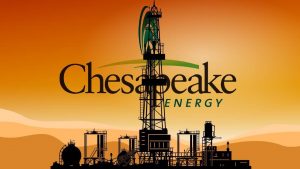
Chesapeake Energy reported more than a billion dollars in net cash from its operating activities in the fourth quarter of 2022, helping the Oklahoma City company return $1.2 billion to shareholders during the year.
The firm announced Tuesday it had net income of $3.513 billion for the quarter or $24 per fully diluted share while adjusted net income totaled $618 million or $4.22 per share.
Adjusted EBITDAX was $1.032 billion and free cash flow amounted to $526 million while adjusted free cash flow totaled $273 million. As a result, a quarterly dividend of $1.29 per common share will be paid in March 2023.
During the quarter, Chesapeake managed to repurchase nearly 4.1 million shares and spent $406 million doing so.
For the year, Chesapeake’s net cash totaled $4.125 billion from operating activities. It also generated company-record $2.1 billion of adjusted free cash flow and returned $2.3 billion to shareholders in dividends and share repurchases.
“The premium rock, returns, and runway of our outstanding assets delivered strong results in 2022, allowing us to return an industry-leading $2.3 billion to shareholders through dividends and buybacks,” stated Nick Dell’Osso, Chesapeake’s President and Chief Executive Officer.

“While we continue to see strong long-term natural gas demand and rising LNG export capacity, our 2023 operating plan preserves margins, optimizes capital allocation and maintains our premier balance sheet as we navigate current market volatility. Behind our disciplined capital allocation, proactive hedging program, and strong balance sheet, we anticipate generating significant free cash flow from operations.”
He said the company’s decision to sell its Eagle Ford assets in a $1.4 billion deal will allow the firm to again deliver for shareholders in the year ahead.
Chesapeake’s net production in the fourth quarter was approximately 4.05 bcfe per day (approximately 90% natural gas and 10% total liquids), utilizing an average of 14 rigs to drill 58 wells and place 66 wells on production. Fourth quarter sales were negatively impacted by minor production curtailments in November and weather conditions in late December.

For the full year 2022, the company produced approximately 4.0 bcfe per day (approximately 90% natural gas and 10% total liquids), utilizing an average of 14 rigs to drill 217 wells and place 215 wells on production.
Chesapeake is currently operating 14 rigs including five in the Marcellus, seven in the Haynesville, and two in the Eagle Ford. The company is currently operating five frac crews including one in the Marcellus, two in the Haynesville and two in the Eagle Ford. The company expects to drop two rigs in the Haynesville during 2023, one in the first quarter and another in the third quarter and a rig in the Marcellus in the third quarter while maintaining one to two frac crews in each asset throughout the year.

The company expects to drill 50 – 60 wells and place 45 – 55 wells on production in the first quarter of 2023. The company’s operating plan remains flexible and is prepared for further adjustments, higher or lower, should market conditions change materially.
ESG Update
In 2022, Chesapeake achieved independent responsibly sourced gas certification across all of its natural gas assets under a combination of the MiQ methane standard, the EO100™ Standard for Responsible Energy Development and Project Canary’s TrustWell certification process. Chesapeake is the first producer to achieve certification for produced and marketed gas volumes across two industry leading gas plays, delivering approximately 6 bcf per day of the premium commodity.
Since 2021, Chesapeake has installed more than 2,000 continuous methane emission monitoring devices and retrofitted approximately 19,000 pneumatic devices. In 2022, the company began conducting aerial Gas Mapping LiDAR scans to detect emissions semiannually across the entirety of its assets, facilitating prompt remediation efforts, reducing emissions and increasing gas revenues.
The company expanded its 2035 net zero goal to include both Scope 1 and Scope 2 GHG emissions. It also lowered its previously attained interim 2025 GHG and methane intensity targets to 3.0 mt CO2e/boe and 0.02%, respectively.
Click here for entire release





